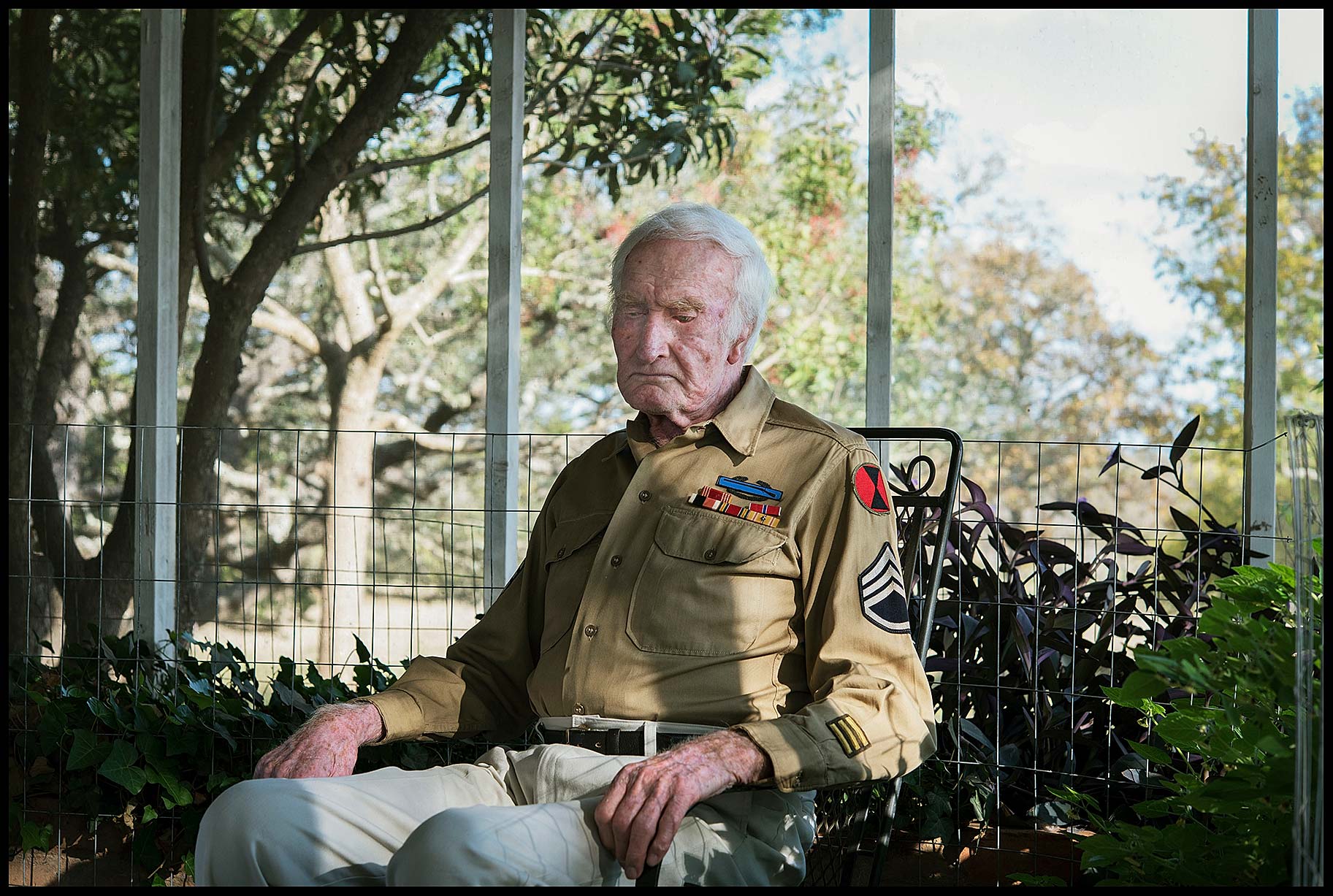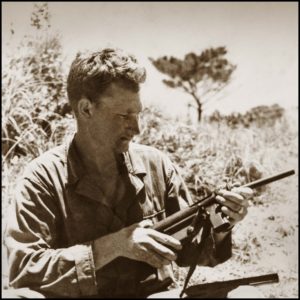
Thomas Whetstone
Okinawa veteran
Korea occupation
Thomas Whetstone
Staff Sergeant, U.S. Army
1944-1946

Pvt. Thomas Whetstone
Hawaii, 1945
I’ve always said infantry combat is an absolute assault on your senses—what you see, what you hear, and strangely enough, what you smell.
I was born in 1924 and grew up in Noxville, Texas. I rode a horse six miles one way to a one-room schoolhouse. I was 16 the same month I graduated from high school in 1940.
I went to Schreiner Institute in Kerrville for two years. My grandmother wanted me to be a lawyer. My parents were going to enroll me in A&M, and very foolishly I decided that I did not want to do that. I came back home and worked on the ranch. I had a two-year deferment as an only son in an agricultural situation, but I couldn’t stand around seeing a lot of my friends enlist. I told the draft board that I didn’t want to be deferred anymore. That was early 1944.
I went into the Army almost immediately. Just about everybody was going to the infantry for replacement training. In Hawaii we got all sorts of weapons training and it was plain we were going to invade an island somewhere. It was early 1945. We were set to ship out and I got on board. I came down with the mumps and they sent me to sick bay, I don’t know how many decks below—hotter than hell. Talk about bad luck. We went to Saipan; the Marines had already taken it. It was sort of a training ground for new troops. They’d take them out on patrol because there were still Japanese scattered around in caves. We were in Saipan about five days.
Then we went to Okinawa. The battle of Okinawa had been going on for three or four weeks when we got there. The day we were scheduled to join our units, the Japanese launched their only counter-attack. It was a damned good thing we dug foxholes because the Japanese loosed their biggest artillery barrage of the whole thing. They had more artillery and automatic weapons on Okinawa than they had any other place in the Pacific. It was quite a shock for raw recruits. That was our baptism of fire. The next day we were taken to our units. I was a rifleman in G Company, 2nd Battalion, 17th Regiment which was part of the 7th Infantry Division.
We were at the front lines for a week before we were withdrawn for about four days. Then we went back up to the front lines. We were in attacking mode all the time. I’ve always said infantry combat is an absolute assault on your senses—what you see, what you hear, and strangely enough, what you smell. What you hear is all sorts of shell bursts, whether it’s mortar shells, artillery shells or just plain automatic weapon fire—that’s that noise. Then you’d hear screaming. What you smell is oftentimes a lot of decay and rot. Our wounded and our dead were taken away almost immediately by the medics. The Japanese didn’t have that capability.
I didn’t leave Okinawa until the war was over as we were gearing up for the invasion of Japan. I don’t think we heard about the bomb dropping. We did hear when the Japanese surrendered. They set off the biggest barrage you ever saw. Me and another guy got in a hole because there was a lot of stuff falling. That was pure deliverance.
About a week after the surrender we went to Korea to disarm the Japanese and put them on a ship for home. We were in Korea for a year. Coming home, we sailed under the Golden Gate. You had to get on deck and watch that. It was a good feeling.
We got back October of 1946 and I started ranching again. It was mostly sheep and goats. I never really quit until two or three years ago. I worked for over 30 years at the USDA station in Kerrville. I was involved in the screw worm eradication project. {11-19-2017 • Fredericksburg, TX}